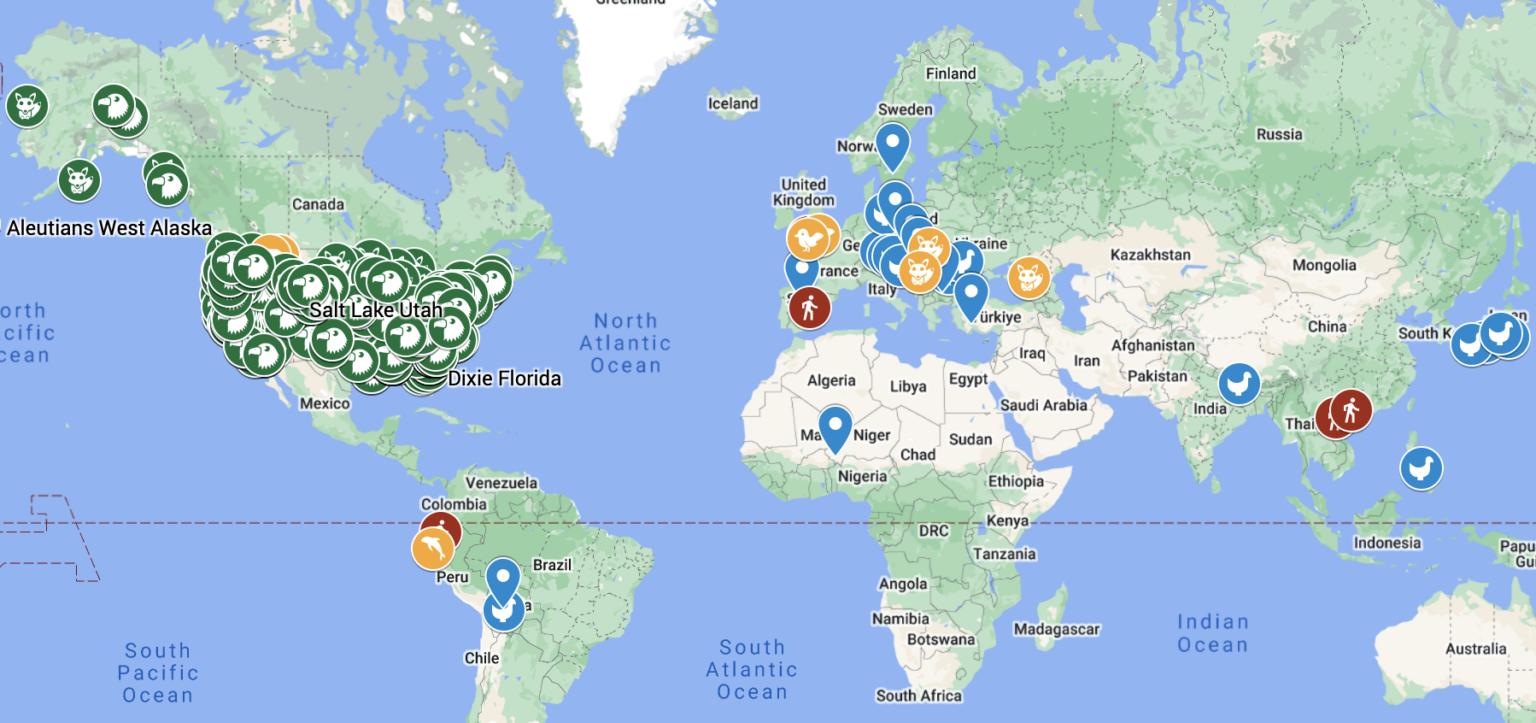H5N1 (Avian Influenza)
Explore
Discover comprehensive information and resources on HPAI H5N1 (Avian Influenza), including updates, situational reports, news, and published research. Explore this page to stay informed about the latest developments and insights HPAI H5N1.

About HPAI H5N1
According to the Centers for Disease Control and Prevention (CDC), avian influenza, commonly referred to as bird flu, is caused by infection with avian influenza Type A viruses. These viruses are naturally found in wild aquatic birds worldwide and can infect domestic poultry, as well as other bird and animal species. While bird flu viruses typically do not infect humans, sporadic human infections have been reported.
Currently, the Highly Pathogenic Avian Influenza (HPAI) H5N1 strain is spreading globally, affecting wild birds and domestic poultry alike. Additionally, the virus has been identified in mammals, including dairy cows, foxes, mink, skunks, bears, sea lions, otters, and even domestic cats and dogs.
- As of April 9, 2025, there have been 70 confirmed human cases in the United States, including one fatality associated with the virus. The CDC has stated that there has been no evidence of person-to-person transmission of the virus, and the overall public health risk remains low.
- As of April 9, 2025, there have been 1,005 dairy cow herds infected with H5N1 in 17 U.S. states.
Furthermore, the CDC indicates that the widespread presence of A(H5N1) bird flu viruses among wild birds, poultry, and some mammals—including cows—creates additional exposure opportunities for humans. Consequently, an increase in sporadic human infections may occur due to exposure to birds, cattle, and other infected animals.
Explore
Resources
CDC Updates & Situational Reports
- Current Situation | April 9, 2025
- Biweekly Region 7 Infectious Disease Briefings
- "First H5 Bird Flu Death Reported in United States | January 6, 2025
- Current Bird Flu Situation in Wild Birds
- Current Bird Flu Situation in Poultry
- Current H5N1 Bird Flu Situation in Dairy Cows
- Current U.S. Bird Flu Situation in Humans
- H5N1 Human Case Update
